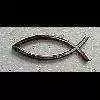-
Welcome to Celiac.com!
You have found your celiac tribe! Join us and ask questions in our forum, share your story, and connect with others.
-
Celiac.com Sponsor (A1):
Celiac.com Sponsor (A1-M):
-
Get Celiac.com Updates:Support Our Content
-
Celiac.com - Celiac Disease & Gluten-Free Diet Support Since 1995
What is Celiac Disease?
Celiac disease (aka coeliac disease) is a genetic autoimmune disorder where ingesting gluten (a protein in wheat, barley, and rye) triggers an immune response that damages the small intestine's lining. This damage leads to inflammation and atrophy of the villi, tiny finger-like projections in the intestine responsible for nutrient absorption. As a result, individuals with celiac disease may experience symptoms like diarrhea, bloating, fatigue, and malnutrition. Over time, untreated celiac disease can lead to more severe health problems, including anemia, osteoporosis, weight loss, and increased risk of certain cancers. A strict gluten-free diet is the only effective treatment. Celiac disease is an autoimmune disease, not a wheat allergy. It's also different from non-celiac gluten sensitivity, gluten intolerance, or sensitivity to gluten.
My Long Journey to Celiac Disease Diagnosis

Like many people, I spent a lot of years, a lot of dollars, and endured many tests and misdiagnoses, before doctors finally discovered that I had celiac disease (also known as coeliac disease or celiac sprue), and needed to eliminate gluten and all gluten-containing ingredients from my diet. Gluten is a protein found in the three main gluten-containing grains: wheat, rye, and barley; and is often hidden in processed foods, and things like soy sauce and beer...[READ MORE about my long and winding road to a celiac disease diagnosis and recovery.]
Gluten-Free Diet
To treat my celiac disease I had to go on a gluten-free diet for life. That meant learning to read food labels to avoid gluten ingredients, and eating a diet of mostly naturally gluten-free foods like meats, fruits, nuts, vegetables, and packaged foods only if they are certified gluten-free or labeled gluten-free, for example gluten-free breads made using gluten-free grains.
Breaking Celiac Disease News & Info:
-
Get Celiac.com Updates:Support Celiac.com:
-
Celiac.com Sponsor (A17):
Celiac.com Sponsor (A17):
Celiac.com Sponsors (A17-M):
-
Recent Activity
-
- trents replied to Terrance Donald's topic in Gluten-Free Restaurants1
Looking For Gluten Free Seafood Restaurant in Ohio (Springdale Area)
Welcome to the forum, @Terrance Donald! Are you actually allergic to gluten or do you say that meaning you either have celiac disease or NCGS (Non Celiac Gluten Sensitivity), neither of which are allergies? -
- Terrance Donald posted a topic in Gluten-Free Restaurants1
Looking For Gluten Free Seafood Restaurant in Ohio (Springdale Area)
Hello Members, I m looking for suggestions about gluten free seafood options in Ohio near springdale area as i will visit that place in 2 weeks. I m seafood lover but same time allergic to gluten. -
- Terrance Donald replied to CJF's topic in Gluten-Free Foods, Products, Shopping & Medications8
Gluten free flours
Hello Everyone, Quite helpful info. I was looking for same kind of info which finally i found here. -
- trents replied to MTAC's topic in Celiac Disease Pre-Diagnosis, Testing & Symptoms6
NEW - 7 year old daughter diagnosed but 'not officially' - negligence from NHS
Essentially all of our UK forum participants who are in the process of a celiac disease diagnosis report that after their blood antibody testing is done, they have to wait many months to get the endoscopy/biopsy for confirmation. My impression is that the UK/European health care models do great at addressing routine healthcare needs but poorly at specialty...
-






